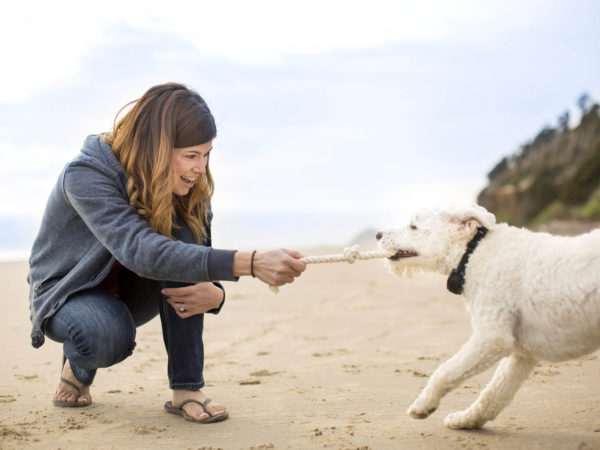Raising a Healthy Pet

Companion animals are an important part of our families, and deserve our attention and affection just like other family members. Yet, unfortunately, American companion animals are falling victim to many of the same ills that plague their caretakers – obesity, diabetes and heart disease – and for similar reasons: too much food, poor food quality, and a sedentary lifestyle. The best ways to keep your companion healthy are the most obvious. Simply follow these suggestions:
Daily walk or exercise. Just like you and me, our companions need to move and explore. Fresh air, new experiences and regular exercise; all of these contribute to pet health.
Regular vet visits. Do you see your doctor for an annual exam? Your companion should, too. Get to know your vet so he or she can know your animal. The relationship will benefit all of you should health problems arise.
Pay attention to your animal(s). Dogs and cats need more than a pat on the head once in a while to feel accepted and loved. By taking in an animal, you make an unspoken agreement that you will provide for its emotional needs, as well as physical.
Spay or neuter, if you don’t have plans to breed it. Not only can you eliminate the chances of certain health problems (ovarian or testicular cancer, for instance), but according to the American Partnership for Pets, you will reduce the chances that your pet will run away, roam or bite. Spaying and neutering also help control the animal population. APP estimates that 8-10 million unwanted animals are taken into shelters each year in the United States. Of those, 4-5 million are euthanized annually.
Look into alternative therapies. For instance, chiropractic care can be of great benefit to animals. According to the American Veterinary Chiropractors Association, a proper exam should include an evaluation of your animal’s health history as well as a neurological exam, a stance and gait analysis, and a motion and static palpitation (where the doctor uses his hands to detect painful or sensitive areas on the animal).
Feed a vital diet. If you want a healthy, vital companion, you must feed your pet natural, whole foods. Enhance the diet with fresh fruit, vegetables, grains and protein sources.
Maintain optimum weight. You should be able to easily find your dog or cat’s backbone underneath its coat, but its ribs should not be visible to the eye. Conversely, if you cannot feel ribs under its coat, you likely have an overweight animal and need to exercise it more and adjust its feeding program to address the problem.
See more articles on Pets & Pet Care.









